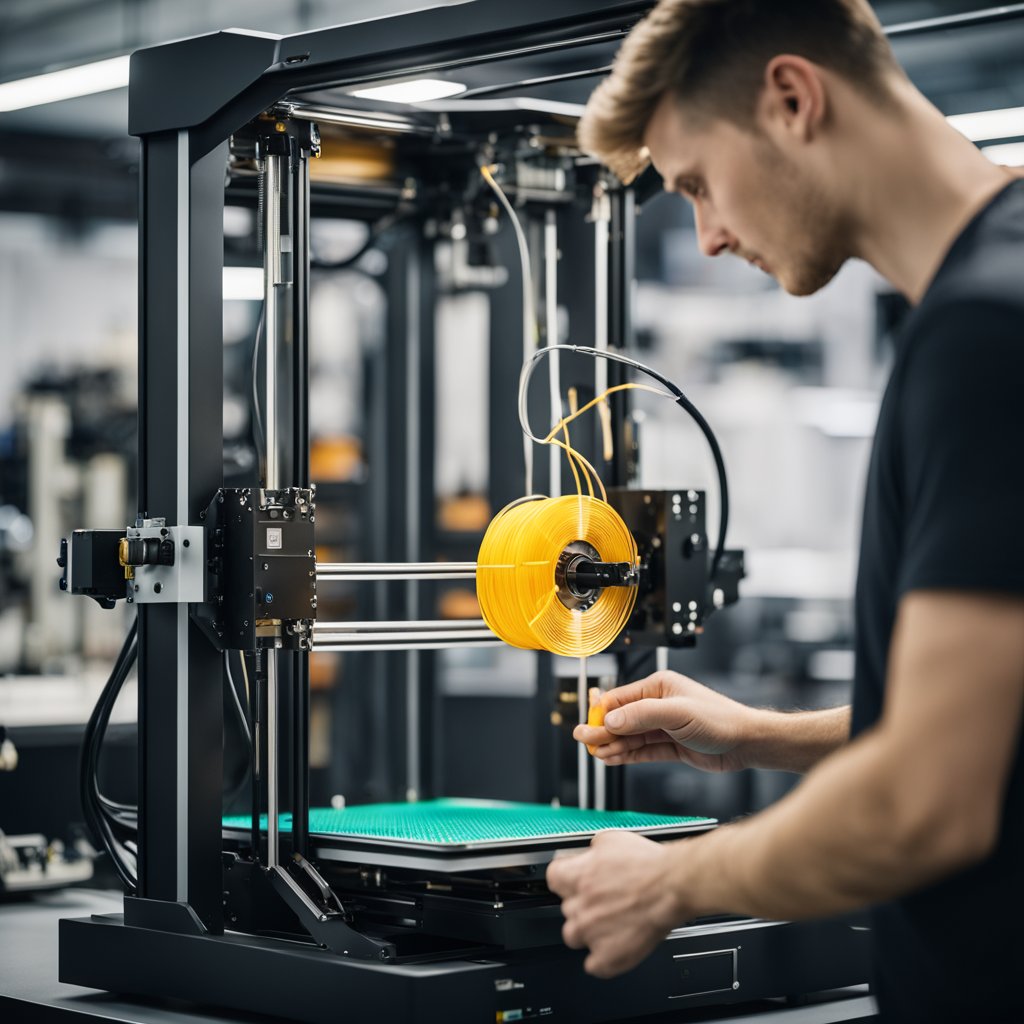
In recent years, the 3D printing industry has seen a significant shift towards sustainability. As environmental concerns grow, the demand for eco-friendly materials has surged. One of the most promising developments in this area is the use of biodegradable filaments. These materials not only reduce the environmental impact of 3D printing but also offer unique properties that can enhance your projects. In this article, we will explore some of the most popular biodegradable filaments available today and their benefits.
What Are Biodegradable Filaments?
Biodegradable filaments are made from natural, renewable resources and are designed to break down more easily in the environment compared to traditional plastics. Unlike conventional filaments such as ABS or PETG, which are derived from petroleum and can take hundreds of years to decompose, biodegradable filaments can degrade in a matter of months under the right conditions. This makes them an attractive option for those looking to reduce their environmental footprint.
Popular Biodegradable Filaments
- PLA (Polylactic Acid) ,PLA is one of the most widely used biodegradable filaments in 3D printing. Derived from renewable resources like corn starch or sugarcane, PLA is known for its ease of use and excellent print quality. It has a relatively low melting point, which makes it suitable for a wide range of 3D printers. PLA is also compostable in industrial facilities, making it a popular choice for eco-conscious makers. Additionally, PLA is available in a variety of colors and finishes, allowing for creative and aesthetically pleasing prints.
- PHA (Polyhydroxyalkanoate), PHA is another biodegradable filament that is gaining popularity. It is produced by microorganisms through a fermentation process and can degrade in natural environments within three to nine months. PHA offers good printability, thermal stability, and a low melting point, making it a versatile option for various applications. Its biodegradability in marine environments also makes it an excellent choice for projects that may end up in waterways.
- PETG (Polyethylene Terephthalate Glycol-Modified), While not entirely biodegradable, PETG is often considered a more eco-friendly option compared to traditional plastics. It is recyclable and can be reused multiple times, reducing waste. PETG is known for its strength, durability, and resistance to moisture, making it suitable for functional parts and outdoor applications. Its ease of printing and minimal warping also make it a favorite among 3D printing enthusiasts.
- PLA/PHA Blends, Combining the best of both worlds, PLA/PHA blends offer enhanced flexibility and toughness compared to pure PLA. These blends maintain the biodegradability of PLA while benefiting from the added durability of PHA. This makes them ideal for applications requiring more robust and resilient prints, such as wearable items or mechanical parts.
- BioPETG, BioPETG is a newer filament that combines the properties of PETG with biodegradable components. It offers the same strength and durability as traditional PETG but with a reduced environmental impact. BioPETG is an excellent choice for those looking to balance performance and sustainability in their 3D printing projects.
Benefits of Using Biodegradable Filaments
- Environmental Impact: By choosing biodegradable filaments, you are contributing to the reduction of plastic waste and promoting a more sustainable future. These materials break down more quickly and safely in the environment, reducing the burden on landfills and oceans. This is particularly important as the world grapples with the growing problem of plastic pollution.
- Renewable Resources: Biodegradable filaments are made from renewable resources, which helps decrease our reliance on fossil fuels. This shift towards renewable materials supports the development of a circular economy, where materials are reused and recycled, minimizing waste and conserving resources.
- Health and Safety: Many biodegradable filaments, such as PLA, emit fewer harmful fumes during printing compared to traditional plastics. This makes them a safer choice for indoor use and for those concerned about air quality. Additionally, the lower printing temperatures required for these filaments reduce the risk of burns and other accidents.
- Versatility: Biodegradable filaments come in a variety of types, each with its own unique properties. This allows makers to choose the best material for their specific needs, whether it’s for creating detailed models, functional parts, or artistic pieces.
Challenges and Considerations
While biodegradable filaments offer many benefits, there are some challenges to consider. For instance, they may have different mechanical properties compared to traditional plastics, which can affect the performance of printed parts. PLA, for example, is more brittle than ABS, which may not be suitable for high-stress applications. Additionally, not all biodegradable filaments are suitable for all types of 3D printers, so it’s essential to check compatibility before use.
Another consideration is the disposal of biodegradable filaments. While they are designed to break down more easily, they still require specific conditions to decompose effectively. Industrial composting facilities are often needed to ensure proper degradation, as home composting may not provide the necessary conditions.
Conclusion
The move towards biodegradable filaments in 3D printing is a positive step for the environment and the industry. By exploring and adopting these eco-friendly options, makers and manufacturers can reduce their environmental footprint and contribute to a more sustainable future. Whether you’re a hobbyist or a professional, incorporating biodegradable filaments into your projects is a great way to make a difference. As technology advances and more biodegradable materials become available, the possibilities for sustainable 3D printing will continue to expand.
Happy printing!
https://all3dp.com/2/best-sustainable-eco-friendly-biodegradable-3d-printer-filaments
https://3dadept.com/sustainable-3d-printing-a-look-at-biodegradable-and-recycled-filaments/
https://filamatrix.com/the-eco-friendly-traits-of-pla-3d-printing-filament/
https://3dprintboss.com/biodegradable-printer-filament/
Discover more from PrintCraft.gr
Subscribe to get the latest posts sent to your email.